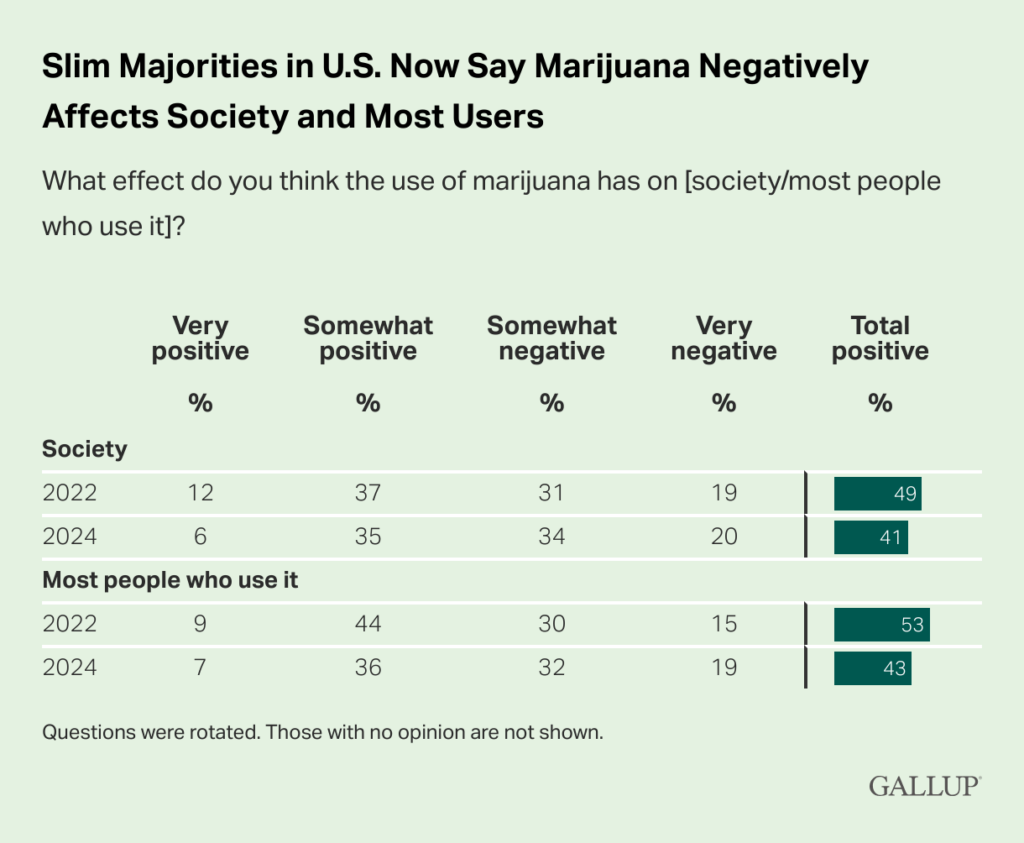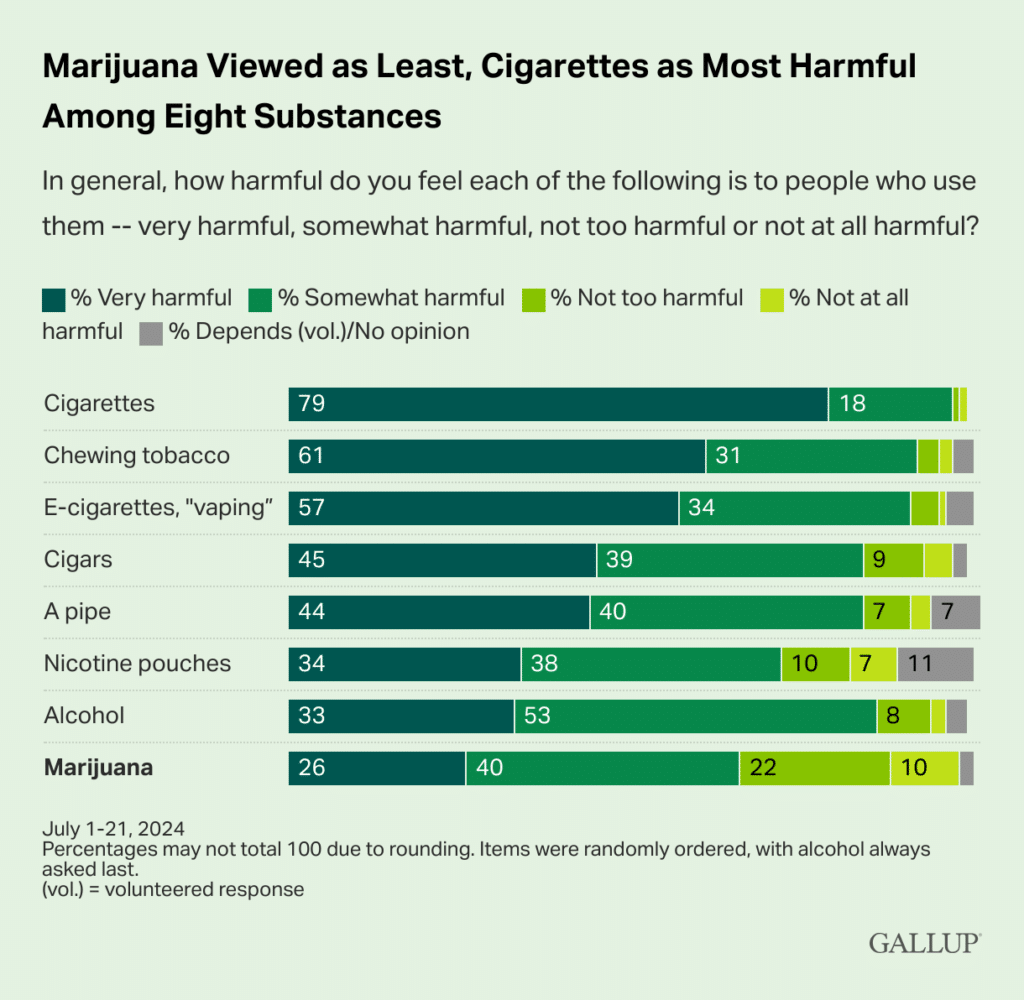According to a recent Gallup poll data reveals that Americans now perceive marijuana as less harmful than other substances like alcohol, tobacco, and nicotine vapes. While opinions on its societal and individual impact are divided, marijuana ranks lowest in terms of perceived harmfulness among commonly used substances.
Shifts in Marijuana Perception
Over the past two years, according to the most recent Gallup poll, Americans’ views on marijuana have worsened slightly. Despite this, the general consensus is that marijuana is less harmful compared to substances like alcohol, tobacco, and e-cigarettes. The Gallup poll indicates a nuanced shift in public opinion, revealing how perceptions have evolved.

Just a few years ago, the majority of Americans viewed marijuana more positively. In 2022, people were evenly split on whether marijuana had a positive or negative effect on society. But the latest data shows slim majorities now believe it has a negative impact on both society and users.
The poll also highlights significant demographic divides. Younger adults, Democrats, and those who attend religious services less frequently tend to view marijuana more positively. Conversely unsurprising, older adults, Republicans, and regular churchgoers are more likely to believe marijuana has a negative effect.
Marijuana vs. Other Substances
When it comes to perceived harmfulness, marijuana ranks lowest out of eight commonly used substances. Two-thirds of Americans think marijuana is very or somewhat harmful, but this is still lower compared to the over 90% who believe cigarettes, chewing tobacco, and e-cigarettes are harmful.
The poll found that 86% of respondents believe alcohol is very or somewhat harmful. Cigarettes came out on top, with 97% agreeing they are harmful, highlighting the nearly unanimous consensus on the dangers of smoking traditional tobacco.
Vaping and e-cigarettes are seen as particularly dangerous, with 91% of respondents considering them very or somewhat harmful. This is a steep contrast to the 66% who view marijuana as harmful.

Despite divided opinions on its impact, 13% of Americans currently smoke marijuana, while 12% consume edibles. These numbers are slightly down from previous years but still significant.
Cigarette use has hit an all-time low, with only 11% of Americans reporting that they smoke. This is a drastic decline from decades past, reflecting public awareness of the health risks associated with smoking.
Alcohol remains the most widely consumed substance, with 58% of adults saying they drink occasionally. Despite recognizing its harmfulness, many Americans continue to indulge.
Legal and Regulatory Landscape
Marijuana is legal for recreational use in 24 states, with more states seeking to add to that total; Florida is poised to become the 25th pending an upcoming ballot in November. Each state has implemented varying degrees of regulation. The U.S. Justice Department has also begun the process of reclassifying marijuana as a less dangerous drug, signaling potential changes in federal policy.
The Biden administration has proposed moving cannabis from Schedule I to Schedule III of the Controlled Substances Act. This reclassification could have far-reaching implications for marijuana’s legal status and public perception.
Despite regulatory efforts, public health concerns remain. The poll reflects a cautious approach to marijuana, with many Americans acknowledging its potential risks while recognizing it as less harmful than other substances.
Public opinion plays a crucial role in shaping drug policy. The evolving perceptions of marijuana could influence future legislation and regulatory measures, affecting everything from legalization efforts to public health campaigns.
Changes in perception also impact social stigma. As marijuana becomes more accepted, users may face less discrimination and more open discussions about its benefits and risks.
The cannabis market is growing rapidly, fueled by changing perceptions and increasing legalization. Understanding public opinion helps businesses and policymakers anticipate market trends and consumer behavior.
The Gallup poll offers a fascinating snapshot of how Americans view marijuana today. While perceptions of its societal impact have worsened slightly, marijuana is still considered less harmful than other substances like alcohol and tobacco. This evolving perspective reflects broader changes in public opinion, influenced by demographic factors, legal developments, and ongoing education efforts.
Understanding these shifts is essential for anyone interested in the future of cannabis policy, public health, and market dynamics. By staying informed and engaged, we can contribute to a more balanced and informed discussion about marijuana’s role in society.


















